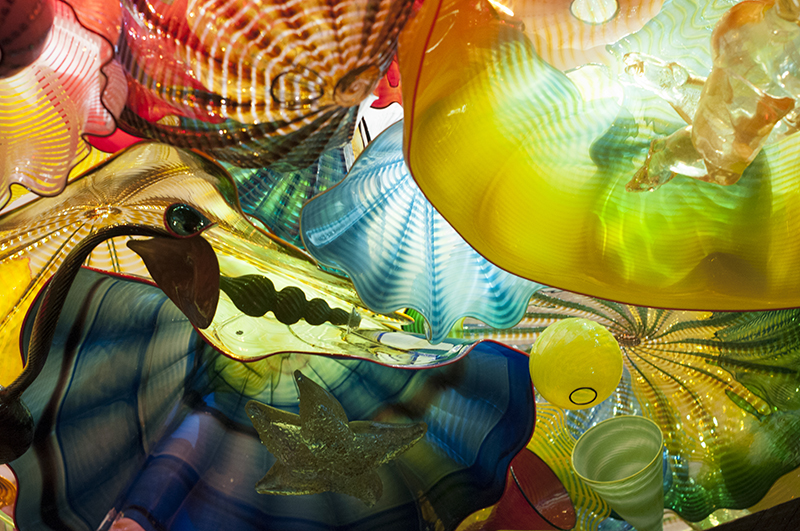
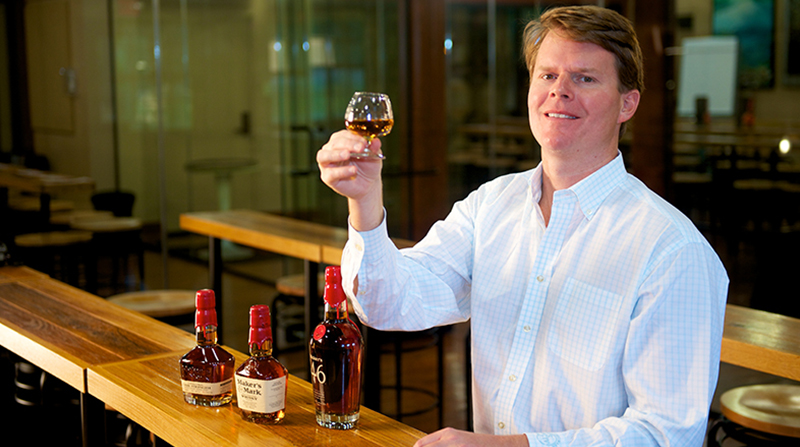
Maker’s Mark COO Rob Samuels, Photo Credit: Maker’s Mark
If you head due south from Louisville, highways become two-lane country roads, cutting through rolling green hills and lily-of-the-valley fields. Welcome to the heart of bourbon country: Loretto, Kentucky.
Bourbon Beginnings
“Sixty-five years ago, my grandparents stood here and visualized a refined, elevated, soft, rich bourbon,” says Rob Samuels, looking out across his family’s distillery, Maker’s Mark. “A full-strength bourbon you could hold on your tongue without the aggressiveness.”
The Samuels family had been distilling whiskey in Scotland since the 1500s, before migrating to America in the late 1600s. It opened T.W. Samuels distillery in a part of Virginia that later became Kentucky, and that business passed down through six generations until Bill Samuels (Rob’s grandfather) decided he wanted to stop producing the harsh-commodity whiskey being made at the time in favor of a smoother spirit he could be proud to call his own.
“My grandfather didn’t have a commercial vision — he had a taste vision,” Samuels says. “That’s just the way craftsmen view the world.”
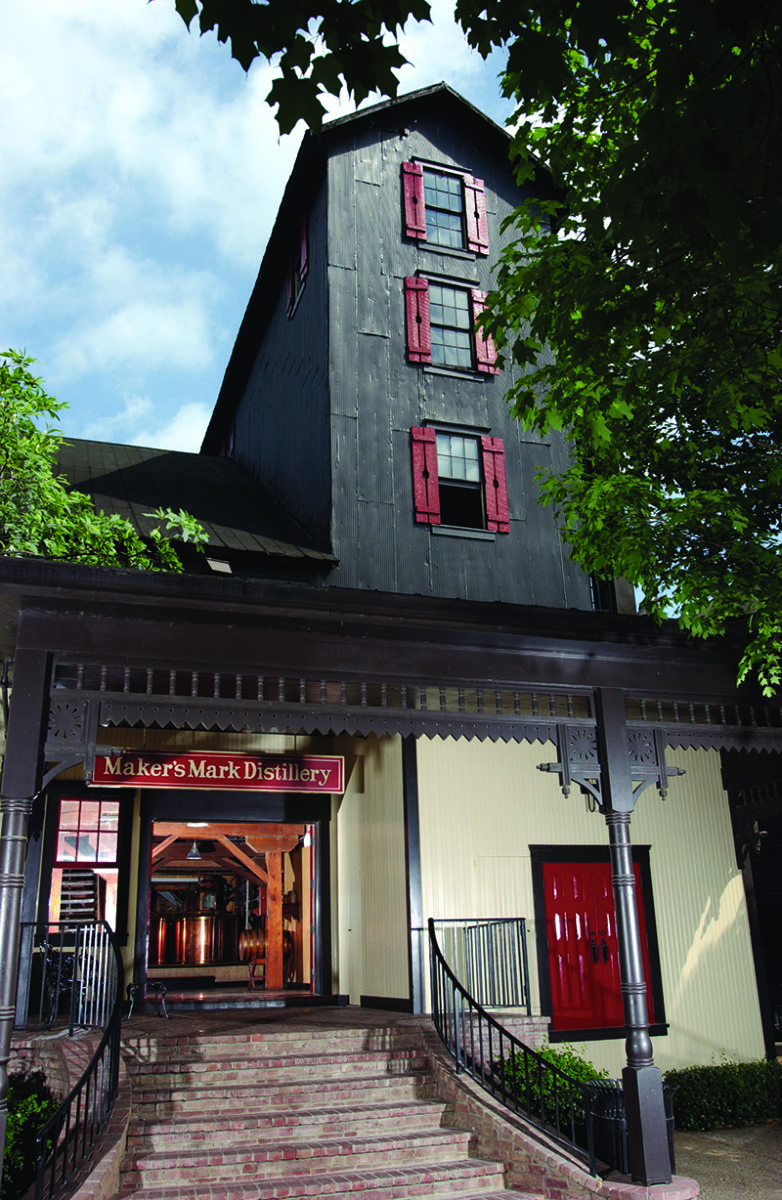
Where the Magic Happens, Photo Credit: Maker’s Mark
While most distillers were using corn, malt and rye, Bill and his wife, Margie, began baking loaves of bread to experiment with different types of grain, then settled on soft red winter wheat instead of rye. And while other producers used a hammer mill, they found it scorched the grains and neutralized the flavor, opting to use a gentler roller mill instead. When the grain was dropped into the cooker, they experimented with slow cooking it for five hours rather than pressure cooking it for three, then distilled at a lower proof to preserve the grain character.
All of these choices — plus the family’s 150-year-old yeast strain and the limestone-filtered lake serving as the singular water source — may have been much more labor-intensive, but they found it resulted in a smooth, complex bourbon.
In 1954, after much trial and error, Maker’s Mark was born (and that was the only bourbon produced by the Samuels for almost 50 years — until Makers 46, a bolder expression finished in French oak, was introduced in 2010.)
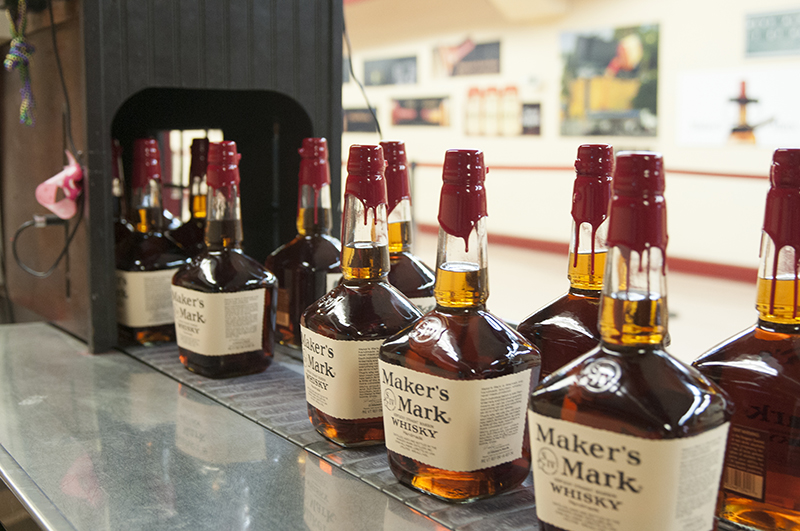
Bottles of Happiness, Photo Credit: Maker’s Mark
Making History
“My grandmother began to imagine the place,” Samuels says. “And what better way to experience it than to swing the doors open and invite people in to visit? She said the place would become the soul of the brand.”
In a move that would go on to define bourbon tourism, Margie Samuels transformed the distillery into a Victorian village inspired by Williamsburg, Virginia: brown buildings represent the whiskey, cream details mimic the label and red shutters feature bottle-shaped cutouts. She thought the bottle should celebrate the handmade essence of Marker’s Mark, so she went on to design and patent the red dripping wax for which Maker’s is known. And In 2014, she was the first woman to be inducted into the Kentucky Bourbon Hall of Fame.
As chief operating officer of Maker’s Mark, Rob continues to carry out his grandparents’ legacy of hospitality, craftsmanship and commitment to quality, offering in-depth specialty tours that focus on different aspects of their historic bourbon production.
And since the recent passing of Senate Bill 11, cocktails can now be served on property at Star Hill Provisions, the first bar and restaurant onsite at a Kentucky distillery. Chef Newman Miller crafts creative spins on regional classics like Benedictine and hot brown sandwiches, pulled pork and bacon fat fried chicken, served alongside tasty tipples.
The distillery recently completed a $67 million renovation that has made it even more of a travel destination. Following up his stunning permanent installation in the distillery’s barrel room, acclaimed glass artist Dale Chihuly added large glass pieces around the grounds, which are on display through October — and come to life with lights for Chihuly Nights.
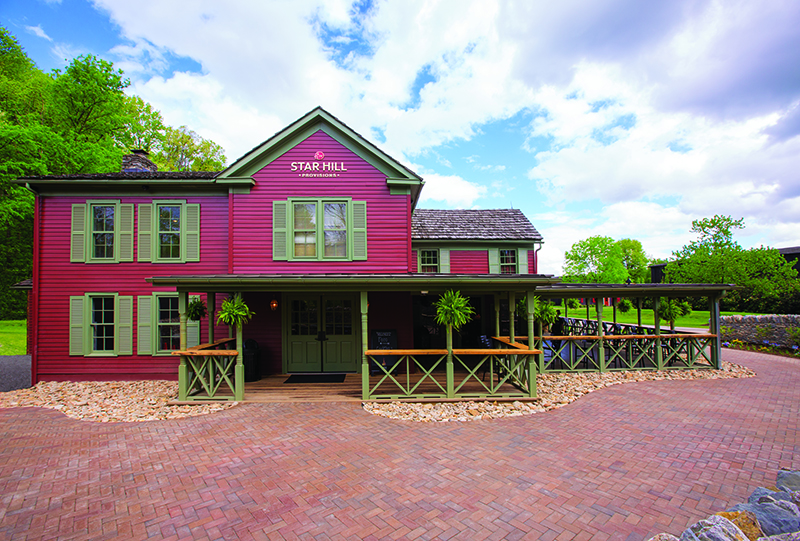
The On-Site Restaurant, Photo Credit: Maker’s Mark
Beyond the Distillery
The brand has also been rolling out its Private Select program, which allows bars, restaurants and hotels across the country to collaborate with the Maker’s beverage team in creating a customized barrel, going beyond single-barrel programs offered by other distilleries.
“I believe we do have, maybe, the most consistent whiskey in the world,” Samuels says. “If we presented you a range of 10 barrels, the taste standard here is tighter than ever before. So, the opportunity is not to just pick a barrel, but to make your own expression.”
Participating restaurateurs and bar owners are presented with five different types of wooden staves, all cut and toasted to result in different flavor characteristics. After tasting the whiskeys made from each one, and experimenting with different blends, they are invited to select any combination of 10 staves, and the aged Maker’s is finished for nine weeks in a bespoke barrel.
“When they come together individually with the bourbon,” Samuels says, “it amps up the flavor characteristics that live within while remaining undeniably Maker’s Mark.”
